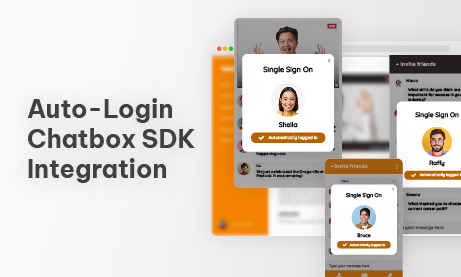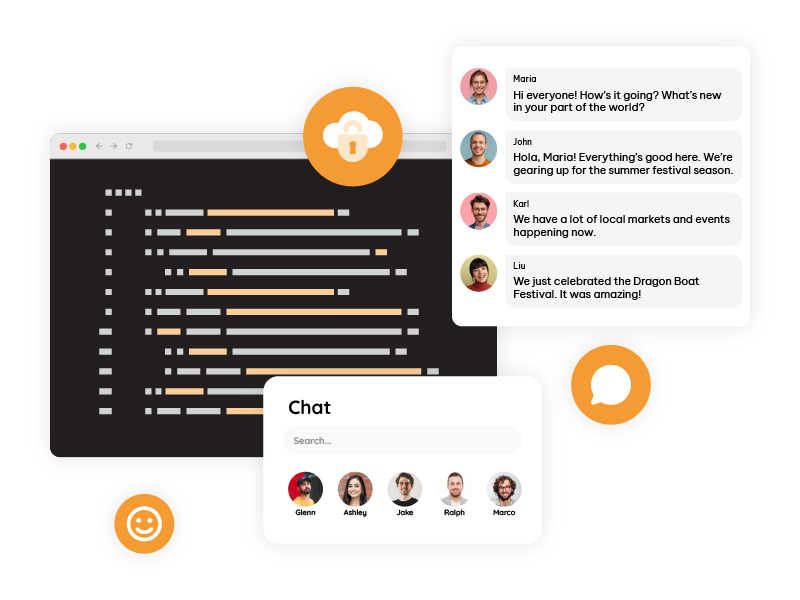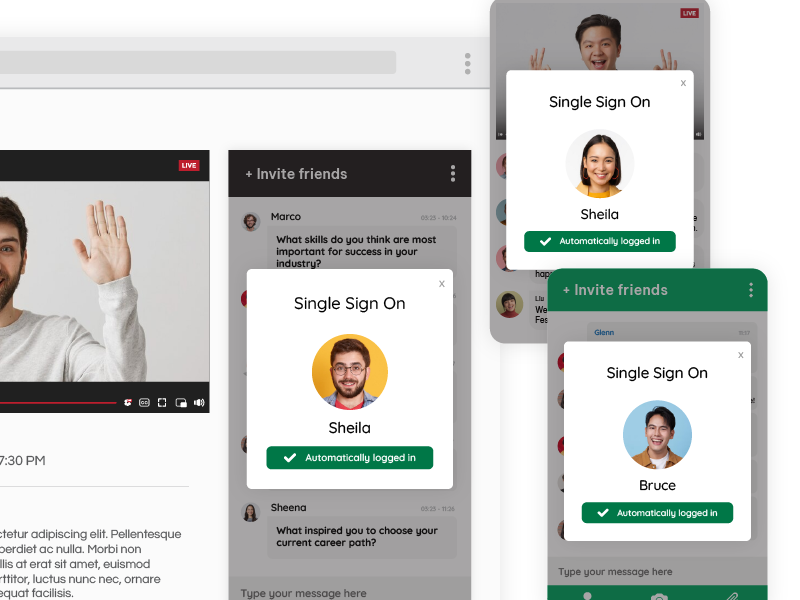We all know that user interaction and engagement are critical for the success of any online platform. Whether running a live event, a learning management system, or a social networking site, providing seamless communication tools can significantly enhance the user experience. One of the most effective ways to achieve this is by using a Chatbox SDK integration with auto-login functionality into your website or even a technical platform.
Let me take you to understand the benefits, features, and implementation of Chatbox SDK integration, and how they can transform your platform’s communication capabilities.
What is a Chatbox SDK Service?
A Chatbox SDK (Software Development Kit) service provides developers with the tools and resources to embed group chat functionalities into their applications or websites. These SDKs come with pre-built modules, APIs, and customizable components, enabling quick and efficient integration. By using a Chatbox SDK, developers can save time and resources that would otherwise be spent on building a chat system from scratch.
Key Features of a Chatbox SDK Service
- Real-Time Messaging: Facilitates instant communication among users.
- Customizable UI: Offers design flexibility to match the platform’s branding.
- User Role Management: Assigns roles such as admin, moderator, or participant.
- Scalability: Handles growing user bases efficiently.
- Secure Authentication: Protects user data and privacy.
- Multi-Platform Support: Ensures compatibility across web and mobile applications.
Why Auto-Login Matters
Auto-login is a game-changing feature in modern communication systems. It simplifies the user journey by allowing them to access chat room features without needing to actually go through a login process. This is particularly important for platforms where user engagement is paramount.
Benefits of Auto-Login in Chatbox SDKs
- Seamless User Experience: Auto-login eliminates the hassle of remembering additional credentials, encouraging users to engage more frequently.
- Enhanced Security: Token-based authentication ensures secure access, reducing the risk of unauthorized entry.
- Improved Retention Rates: By reducing friction, auto-login keeps users engaged and loyal to the platform.
- Time Efficiency: Users can instantly access chat functionalities, saving time and enhancing satisfaction.
How to Implement a Chatbox SDK Integration with Auto-Login
Here are the steps to implement the RumbleTalk Chatbox SDK integration with auto-login.
Step 1: Identify
Before utilizing a Chatbox SDK integration, outline your platform’s needs. Consider factors such as:
- The size of your user base
- The level of customization required
- Security Protocols
- Integration with existing systems
Step 2: Choose the Right SDK Provider
There are numerous Chatbox SDK providers available, each offering unique features. Evaluate them based on the following:
- Scalability and flexibility
- Support for auto-login
- Ease of integration
- Documentation and support services
- and most important features
Step 3: Integration Process
- Set Up the SDK: install the SDK on your platform (with RumbleTalk you may use PHP and other sdks).
- Configure Authentication: Implement token-based authentication for auto-login functionality.
- Customize Features: Tailor the chat UI and functionalities to align with your platform’s branding and user needs.
- Test and Launch: Conduct rigorous testing to ensure smooth performance before rolling out the feature to users.
Check out RumbleTalk’s SDK here.
Case Studies: Successful Implementations
So, where can you use Chatbox SDK? Here are some examples.
1. E-Learning Platforms
An online learning management system integrated a Chatbox SDK with auto-login to facilitate real-time interaction between students and instructors. This led to a 30% increase in course completion rates as students could easily seek assistance and collaborate with peers.
2. Online Trading Websites
A trading platform implemented a Chatbox SDK to provide instant group discussion. With auto-login, users could quickly connect with the platform and conduct social trading.
3. Virtual Events
A virtual events platform used a Chatbox SDK to enable networking among participants. Auto-login ensured seamless access, boosting user engagement by 40% during events.
Best Practices for Maximizing the Benefits of Chatbox SDKs
- Prioritize User Privacy: Ensure compliance with data protection regulations like GDPR or CCPA.
- Optimize Performance: Regularly update the SDK and monitor performance metrics to avoid lags or downtimes.
- Leverage Analytics: Use analytics tools to track user interactions and improve the chat experience.
- Encourage Feedback: Continuously gather user feedback to refine and enhance chat functionalities.
Future Trends in Chatbox SDK Services
The demand for advanced chat functionalities is set to grow, driven by the need for personalized and interactive user experiences. Some emerging trends include:
- AI-Powered Chatbots: Enhancing chat services with AI to provide instant, intelligent responses.
- Voice and Video Integration: Expanding beyond text to include voice and video communication.
- Cross-Platform Synchronization: Ensuring seamless communication across devices.
- Blockchain for Security: Leveraging blockchain technology to enhance data security and privacy. (not planned at the current stage with RumbleTalk).
What’s Next
Integrating a Chatbox SDK service with auto-login functionality is a powerful strategy to revolutionize communication on your platform. It not only enhances user engagement but also ensures secure and seamless access to chat features. By implementing the right SDK and following best practices, you can create a dynamic, interactive environment that keeps users coming back for more.
Embed a Chatbox SDK service today and take the first step toward transforming your platform’s communication capabilities. The future of user engagement is here, and it starts with a simple yet impactful integration.




